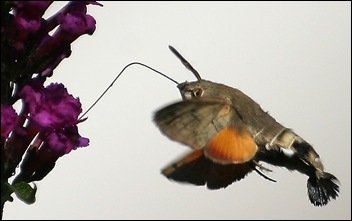
Dit is mijn favoriet onder de vlindersoorten!
~
De kolibrievlinder!
(Macroglossum stellatarum) is een dagactieve nachtvlinder
uit de familie Sphingidae, de pijlstaarten.
Hij wordt ook wel Meekrapvlinder of Onrustvlinder genoemd.
This is my favorite of butterflies!
~
The hummingbird Hawk moth!
(Macroglossum stellatarum) is a species of Sphingidae,
hawk moth with a long proboscis, which regularly
hovers, making an audible humming noise.
These two features make it look remarkably like a
hummingbird when it feeds on flowers; it is theorised
that this is a result of convergent evolution.
It flies during the day, especially in bright sunshine,
but also at dusk, dawn, and even in the rain,
which is unusual for even diurnal hawkmoths.
Its visual abilities have been much studied, and it has
been shown to have a relatively good ability to learn colours
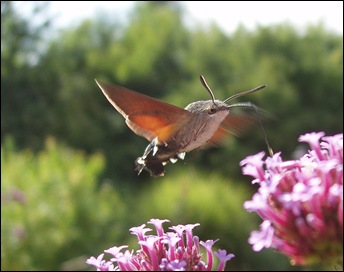
De Kolibrievlinder doet zijn naam eer aan.
Als hij bezig is nectar te verzamelen, dan vliegt hij als
een kolibrie bij de bloem. Hij hangt stil in de lucht en
met zijn tong slurpt hij nectar uit de bloem.
~
De spanwijdte is ongeveer 4 tot 6 centimeter.
De voorvleugels zijn grijsbruin, de ondervleugels
zijn oranjegeel.
Aan de brede staart zitten zwarte en witte plukken haar.
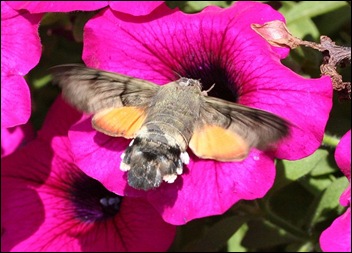
The Hummingbird Hawk-moth is distributed throughout
the northern Old World from Portugal to Japan,
but is resident only in warmer climates
(southern Europe, North Africa, and points east).
It is strongly migratory and can be found virtually
anywhere in the hemisphere in the summer.
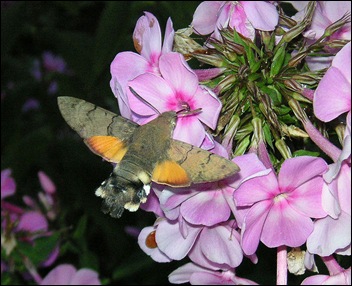
Ze komen voor op zonnige, open plaatsen.
Op droge graslanden en langs bosranden.
De laatste jaren worden ze steeds vaker gezien in Nederland.
Het is een trekvlinder die vanuit het zuiden naar ons toe komt.
De vlinder kan vrijwel het gehele jaar worden waargenomen,
maar vliegt vooral in augustus en september.
Life Cycle;
Two or more broods are produced each year.
The adult may be encountered at any time of the year,
especially in the south of the range, where there may be
three or four broods. It overwinters as an adult in a
crevice among rocks, trees, and buildings.
On very warm days it may emerge to feed in mid-winter.
The glossy pale green eggs are spherical with
a 1 mm diameter.
They are said to look like the flower buds of the
host plant Galium, and that is where the female lays them.
They hatch 6 to 8 days after laying.
Up to 200 eggs may be laid by one female,
each on a separate plant.
Newly hatched larvae are clear yellow, and in
the second instar assume their green coloration.
The larva is green with two grey stripes bordered in
cream along the sides and the horn at the rear end
typical of sphingids. The horn is purplish red,
changing to blue with an orange tip in the last instar.
They feed fully exposed on the top of the host plant and
rest in among a tangle of stems.
Although dependent on warmth and sun, the larval
stage can be as rapid as 20 days.
De cocon is geelbruin met een opvallende grote 'kop'
De rups van de Kolibrievlinder is tot 35 mm lang en
lichtgroen met een gele en witte streep aan beide zijden.
-
Levenscyclus:
Rups: mei-oktober. De meeste rupsen worden waargenomen
in augustus. De rups verpopt zich in een losse cocon die
dicht bij de grond of tussen bladeren van de waardplant
gesponnen wordt.
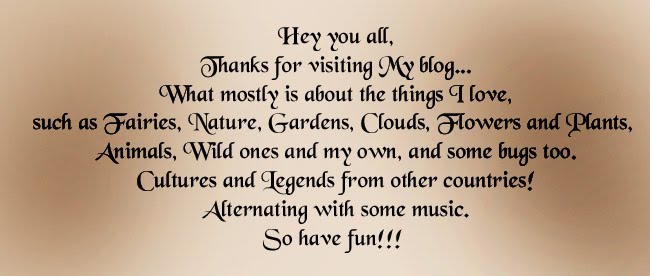


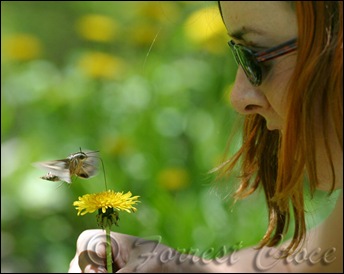
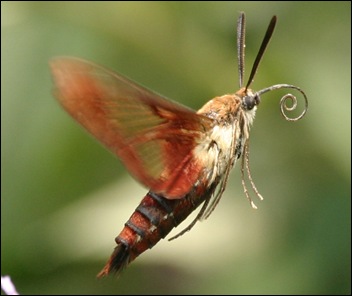

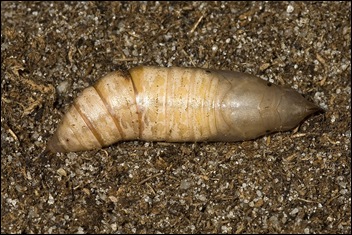
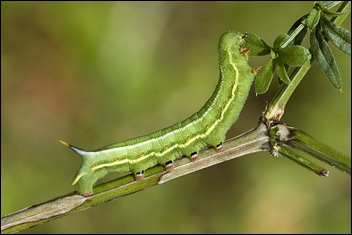
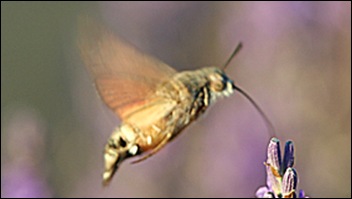
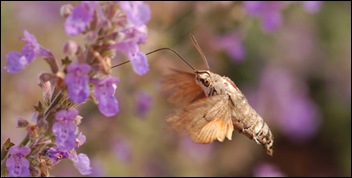
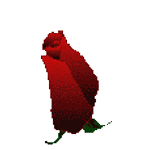























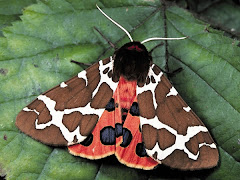

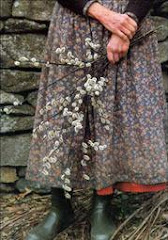
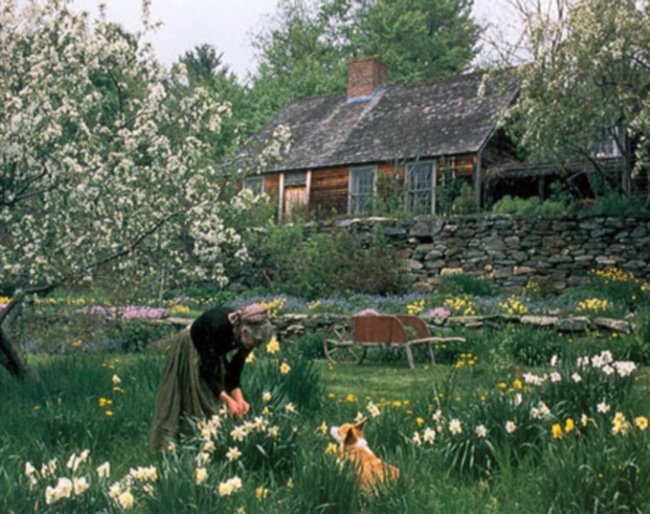
1 opmerking:
Gezien in juli in Suze, gemeente Marcheseuil in de Bourgogne, frankrijk.
Een reactie posten